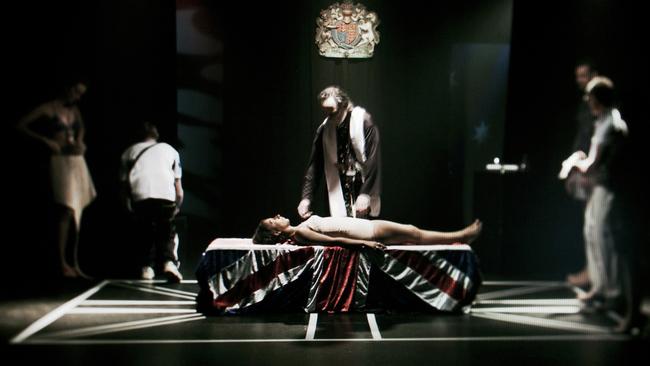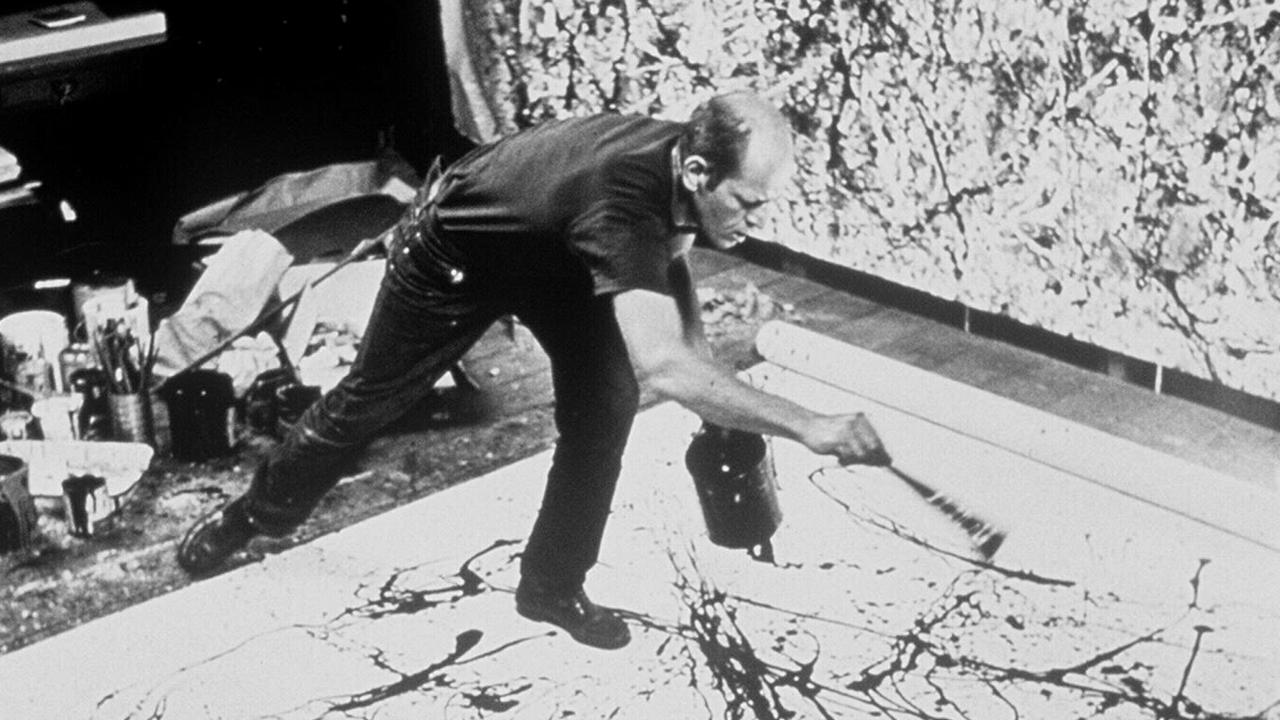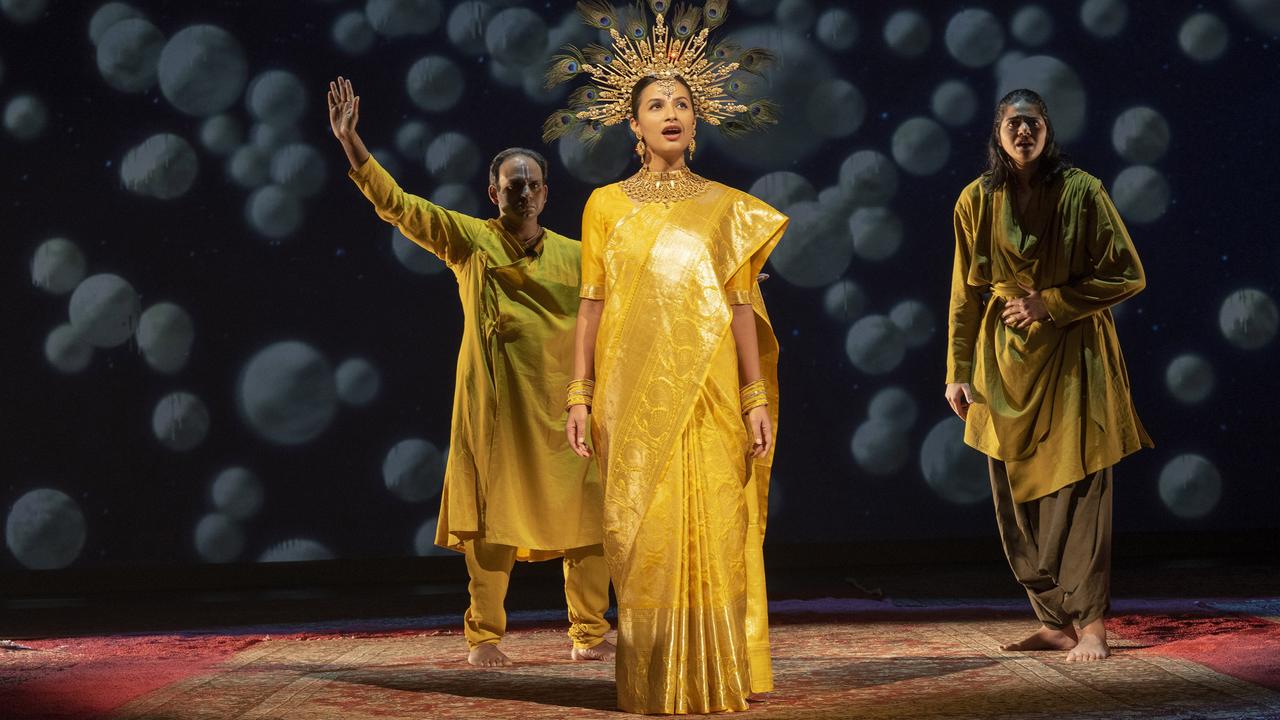Megan Cope’s ‘Blaktism’ video wins top indigenous art award
Megan Cope’s award-winning video challenges black/white stereotypes.

A provocative and ironically amusing video work about gaining a certificate of Aboriginality has become the first video installation to win Australia’s richest indigenous art prize.
Megan Cope, a Noonuccal-Ngugi artist from Stradbroke Island, has won the prestigious $50,000 Western Australian Indigenous Art Award with her eight-minute work The Blaktism.
It was prompted by the experience of having to gain a certificate of Aboriginality in order to apply for a residency in Paris.
In The Blaktism, Cope appears as a light-skinned individual “inducted” into Aboriginality; she undergoes a bizarre ritual presided over by a sinister vicar. Her skin pigment is made darker by an application of paint, while contact lenses from a silver Victorian dish are ceremoniously inserted to turn her green eyes brown.
“I got blaktised,” says Cope, who depicts herself wrapped in an Australian flag and given honorary indigenous status, before taking part in a trancelike assimilation party with a raucous bunch of “typical” Australians.
The judges described it as “a theatrical and humorous insight into the complexities of indigenous identity, notions of citizenship and Australian stereotypes through her imagined ‘blaktism’.”
They said the work had strong social and political resonance and “challenges a stereotypical view of indigenous culture and a broader Australian tribalism of drinking and party culture”.
Different social commentary is mirrored in the paintings of Eunice Yunurupa Porter, the winner of the $10,000 West Australian artist category. Porter was praised for “documenting contemporary history in her own community, including first contact with non-indigenous Australians”.
Porter is from the remote desert community of Warakurna on Ngaanyatjarra lands straddling the WA/Northern Territory border. Unlike the 33-year-old Cope, Porter, who is in her 70s, was born long before Aboriginal people were included in the national census. She spent her childhood in Warburton Mission.
In a series of lively and affectionate tableaux, she captures changing events in the remote lands, from daily hunting duties to scenes of people being rounded up from the bush to live in settlements. First contact narrative is embedded in her paintings; she reflects a non-judgmental response to events such as the arrival of mining crews to dig up land.
Another embedded aspect — this time literally — is the detritus of camp life. Porter delights in taking found objects such as cans and discarded car numberplates and, with tin snips, refashioning and flattening them into human figures or the 3-D outline of houses that is fixed on to the canvas.
The award judges — Victorian curator Kimberley Moulton, former Art Gallery of WA indigenous curator Clotilde Bullen and Perth Institute of Contemporary Arts director Amy Barrett-Lennard — said Porter presented “a pertinent Western Australian story that has been told in a highly lyrical and evocative manner”.
Australia’s richest indigenous art prize, established in 2008, is awarded every two years at the AGWA. The 14 finalists were selected this year from 118 artists.
The finalists’ exhibition, showing at AGWA until October 12, contains a dense blend of works, including those of Spinifex artist Simon Hogan, now in his 80s, who paints acrylics on linen and canvas.
It also features three highly commended artists: Perth-based Stolen Generations artist Sandra Hill, who has turned archival material into commentary; Yirrkala artist Nonggirrnga Marawili, whose land and sky paintings are majestic; and Yunkurra Billy Atkins, who offers haunting depictions of Martu cannibal stories.
AGWA indigenous art curator Carly Lane says the entries show how indigenous artists creatively and instinctively reinvent tradition and connection to country.
“To (our) folly, some among us treat tradition as a static force,” she writes in the award brochure. “Artists, though, seem to have a healthy respect for the changing nature of tradition and our tendency as humans to reinvent it. Moreover, artists do not travel far from tradition to make the new; the ‘new’ sits patiently in the wings, waiting to take shape.”
Winner Cope told a large gallery audience in Perth that it had been difficult juggling her work as a community artist with her own practice.
But she said the winnings from her first major art prize would be invested in a job-creating community project on North Stradbroke Island.
The Blaktism emerged after Cope, a member of the urban Aboriginal art collective proppaNOW, was commissioned by Melbourne’s Next Wave festival for emerging artists.
Although a painter, Cope said she opted for video to express complex feelings involving denial of identity that could not easily be conveyed in a painting.
Lane writes that The Blaktism concludes on a poignant note “with the comically sad ‘blacked-up’ Cope, in her minstrel white gloves, removing her make-up. The show is over, ladies and gentlemen — thank y’all for coming”.
“While Cope acknowledges the complexity around the issue of cultural self-determination in 21st-century Australia,” she adds, “she has also revealed, particularly in this work, a healthy and challenging disdain for it.”


